Ministry of Electronics & IT
Report on India’s Trillion Dollar Digital Opportunity Released
India can create up to $1 trillion of economic value from the digital economy in 2025
India is the second-fastest digitizing economy amongst 17 leading economies of the world
Thirty digital themes can be scaled up nationally to accelerate progress in nine priority areas
India’s digital economy of the future could generate productivity and output sufficient to support 55 million to 60 million workers in 2025
प्रविष्टि तिथि:
20 FEB 2019 7:59PM by PIB Mumbai
With a strong foundation of digital infrastructure and expanded digital access through Digital India Programme of the Government, India is now poised for the next phase of growth — creation of tremendous economic value and empowerment of citizens as new digital applications permeate sector after sector.
India can create up to $1 trillion of economic value from the digital economy in 2025, up from around $200 billion currently
- India’s digital consumer base is the second largest in the world and growing at the second-fastest rate amongst major economies. India’s inclusive digital model is narrowing the digital divide within the country and bringing benefits of technology to all segments of people.
- Half the potential economic value of $1 trillion in 2025 could come from new digital ecosystems in diverse sectors, including financial services, agriculture, healthcare, logistics, jobs and skills market, e-governance and other areas.
The Digital India program, launched in July 2015, is a flagship program of the Government of India that is transforming the country into a digitally empowered society and knowledge economy. Building on this foundation, India now has a massive opportunity to further scale up its digital economy.
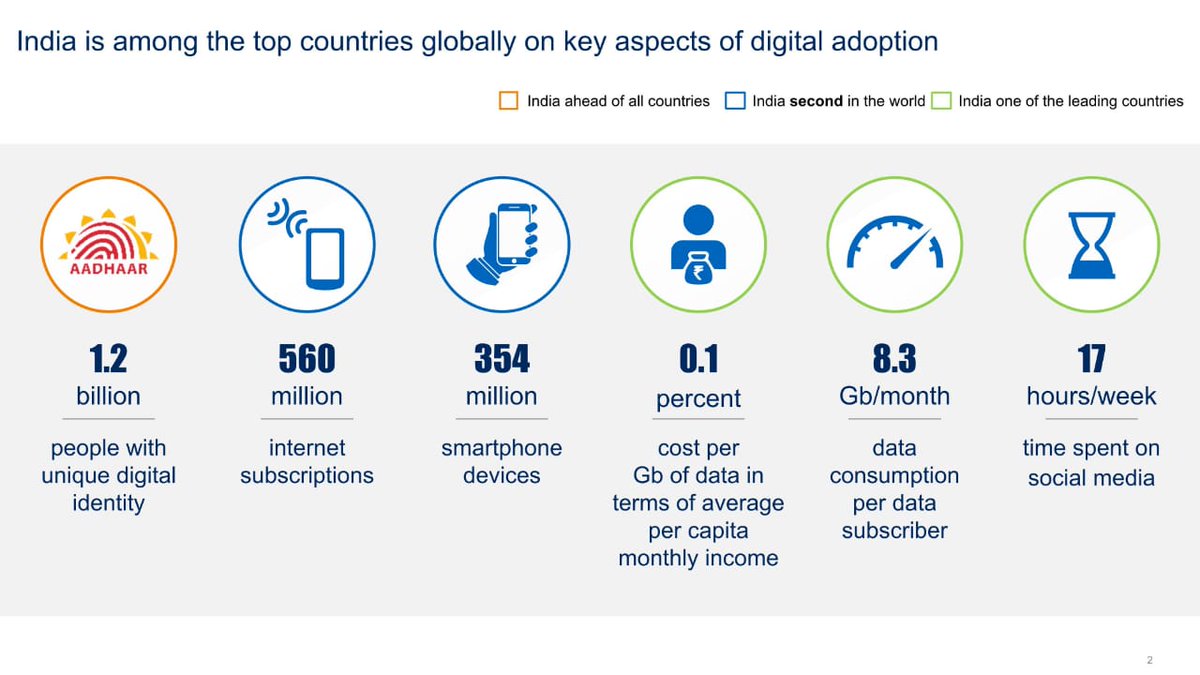
These are the findings of ‘India’s Trillion-Dollar Digital economy’, a new report by the Government of India’s Ministry for Electronics and Information Technology (MEITY), released by the Union Minister for Law & Justice and Electronics & Information technology, Shri Ravi Shankar Prasad in Mumbai today. The report takes stock of the massive digitally-enabled change that is underway and lays out a vision and roadmap for the coming years. The fact-based report is a collaborative effort, with data and inputs from a wide range of government, business and civil society entities, undertaken over the past year.
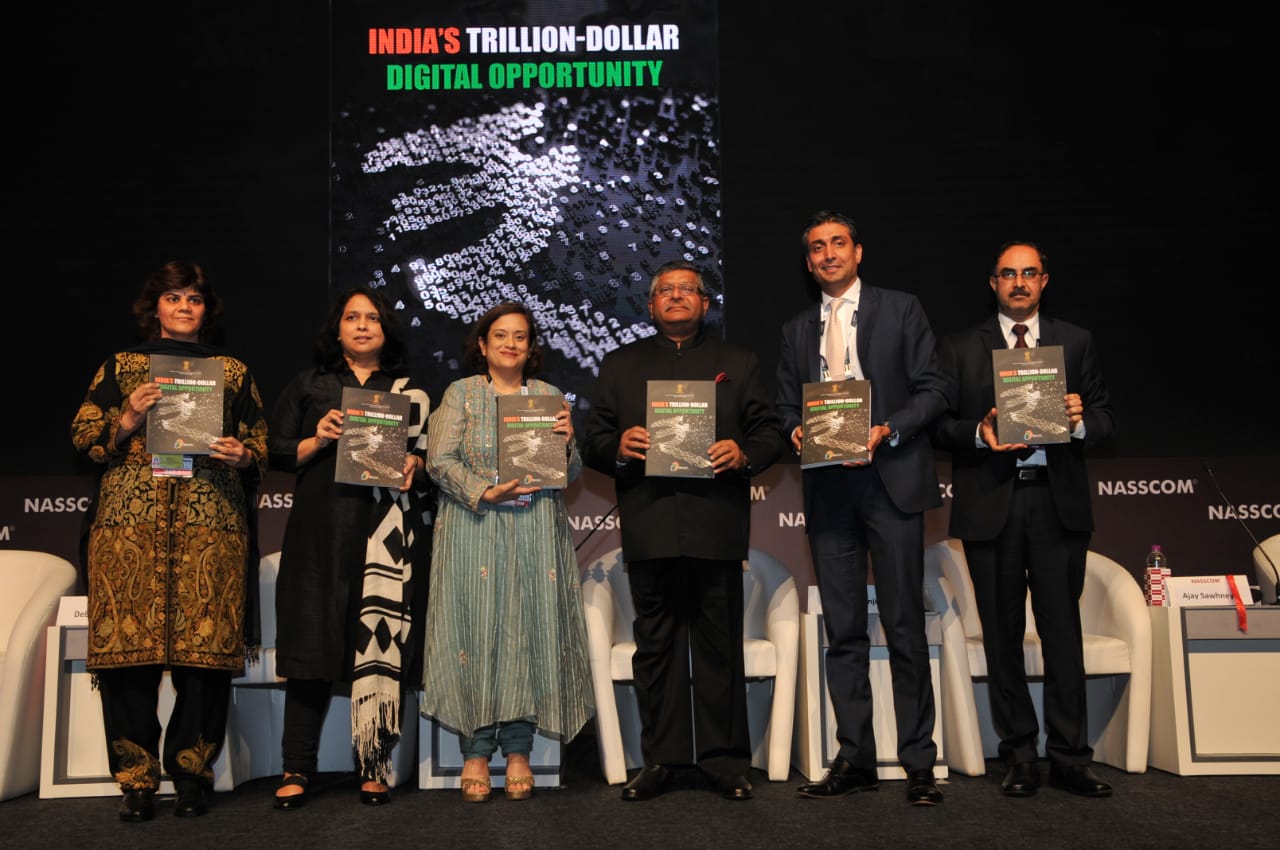
Releasing the report, the Union Minister said, “India has nearly half a billion internet users and their number is rising rapidly in every part of the country. This will create a huge market for a host of digital services, platforms, applications, content, and solutions. Overall, India could potentially see a five-fold increase in economic value from digital transformation by 2025, representing an attractive opportunity for global and local businesses, start-ups, and innovators to invest in emerging technologies (like AI, blockchain, or drones) in ways that are customized to India’s needs.’’
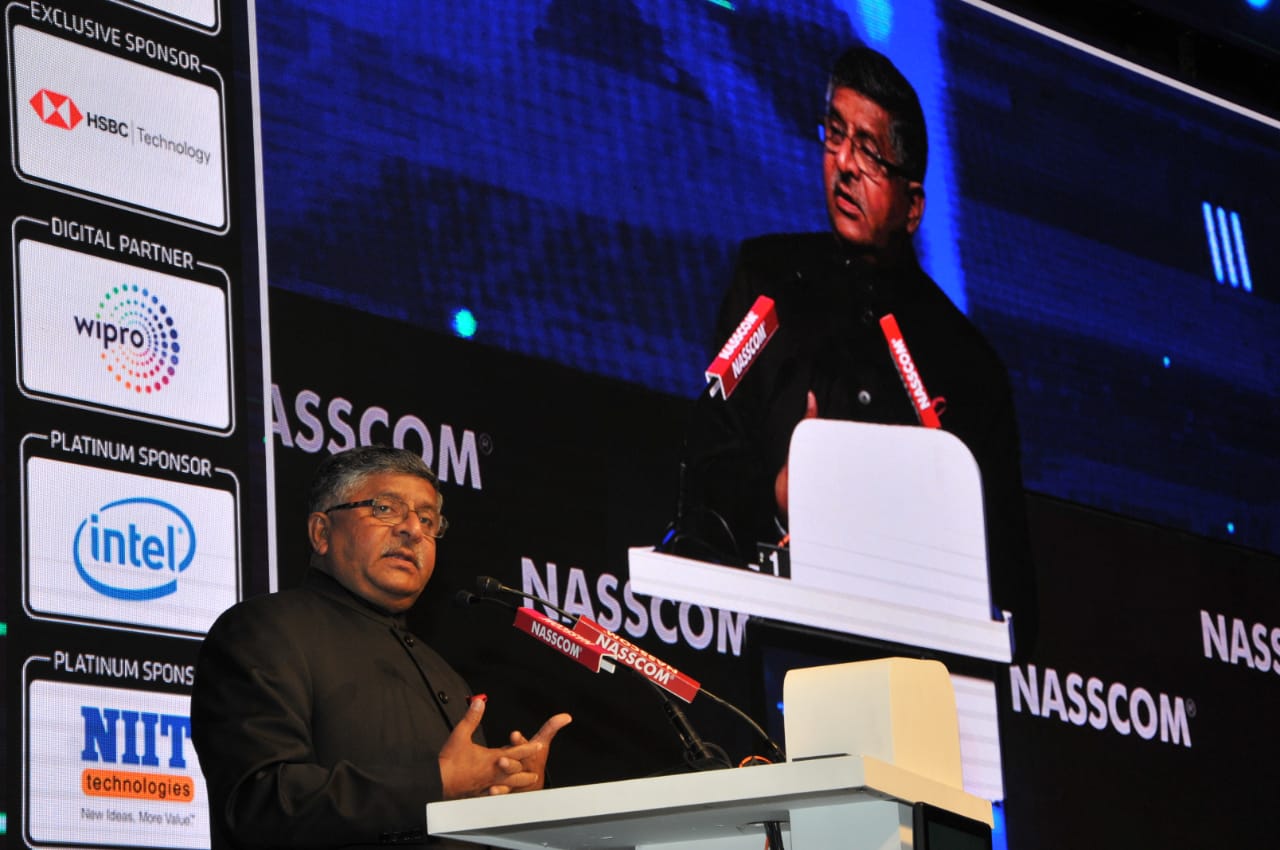
The ‘Team India’ spirit of partnership and collaboration will be critical, across central and state governments, the private sector, industry associations and the social sector. The Minister said at the event, “Working with all stakeholders, India can build on the digital dynamism we have already created to deepen, widen, and scale up its digital economy in the coming years, creating huge economic value and empowering millions of people across all walks of life.”
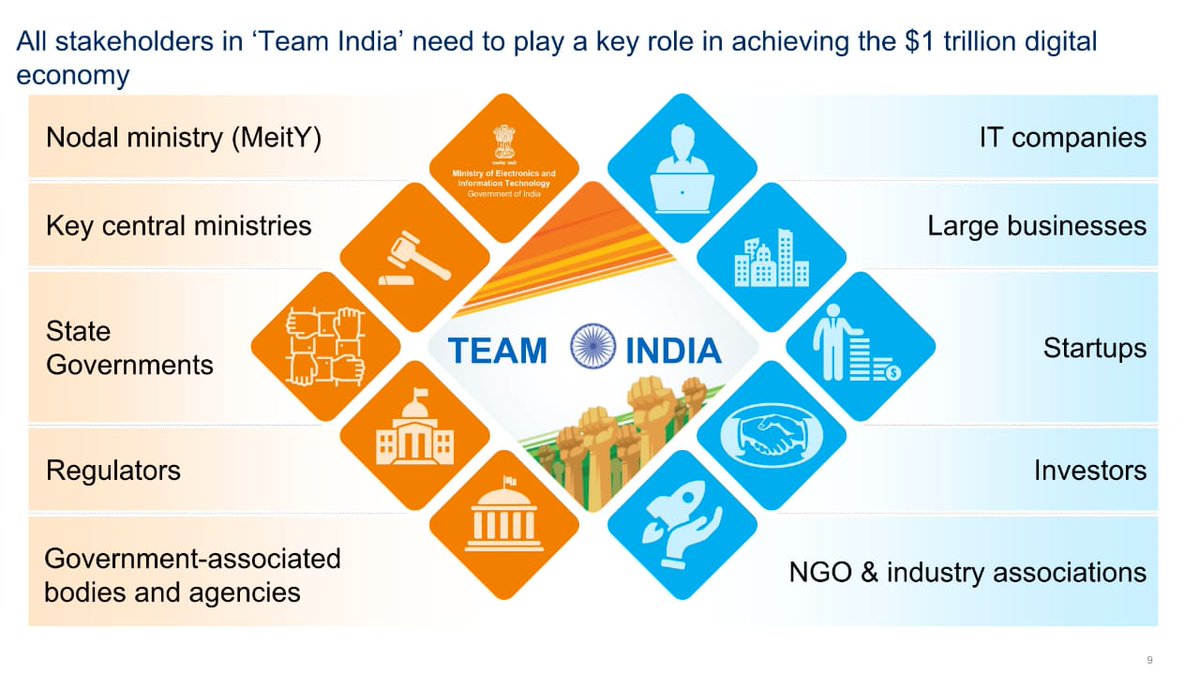
The report finds that India can create up to $1 trillion of economic value from the digital economy in 2025, with about half of the opportunity originating in new digital ecosystems that can spring up in diverse sectors of the economy. Currently, India’s digital economy generates about $200 billion of economic value add.
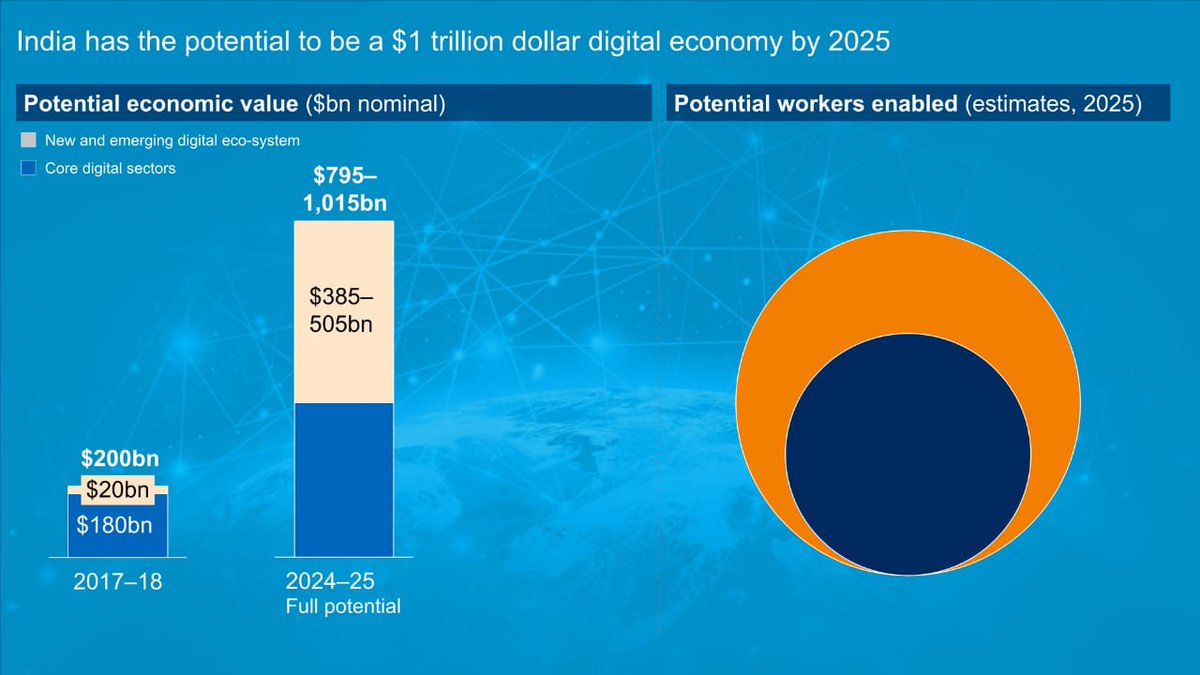
India is the second-fastest digitizing economy amongst 17 leading economies of the world, according to the report’s Country Digital Index, that is based on 30 metrics to measure digital adoption in 17 mature and emerging digital economies, including Brazil, China, Indonesia, Russia, South Korea, Sweden, and the United States.
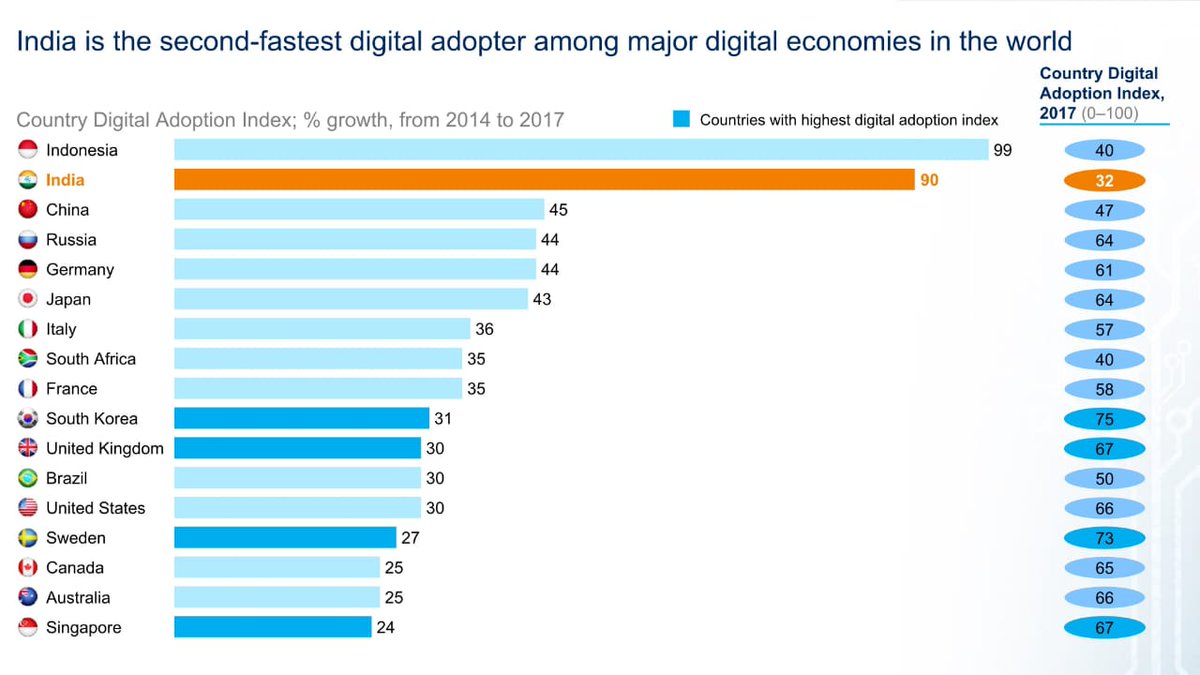
Even within India, the digital divide is narrowing fast, as less affluent states leapfrog to catch up with more affluent ones on dimensions such as internet subscriber growth, density of internet infrastructure, and Common Service Centres.
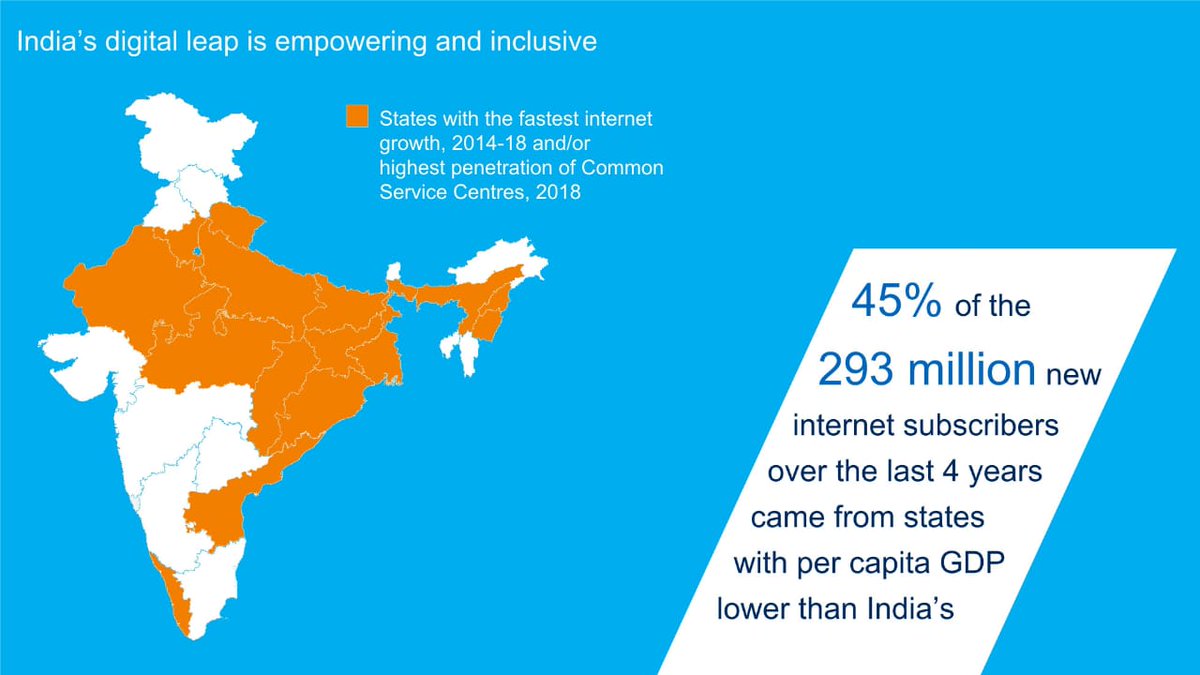
On the back of rapid progress in internet infrastructure and usage, thirty digital themes can be scaled up nationally to accelerate progress in nine priority areas. The report lays out a roadmap for Digital India 2.0, and outlines the enablers required in nine strategic areas, ranging from creating 21st century IT infrastructure and software capabilities, to using digital to serve key national priorities, such as healthcare, education and energy for all, doubling farmers’ income, Make in India, next-gen financial services, jobs and skills of the future, and e-governance. These themes can help create up to $1 trillion of economic value in 2025, and empower millions of workers, entrepreneurs, small and large businesses, and consumers in rural and urban parts of the country.
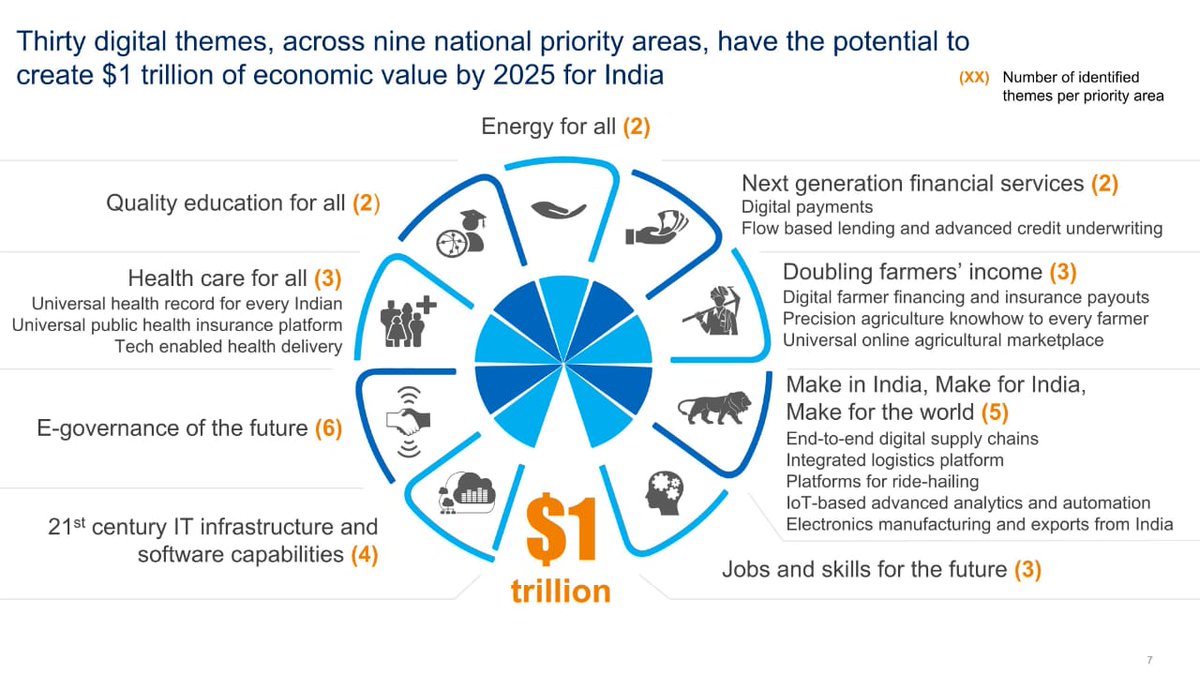
India’s digital economy of the future could generate productivity and output sufficient to support 55 million to 60 million workers in 2025. Digital technologies fundamentally change work and create demand for new types of skills and job roles whichresults in further augmentation of high productivity, highly skilled jobs. Aside from digital coders and solution providers, many types of work will become digitally-enabled and necessitate workers to be trained as users of digital technologies. For example, delivery personnel and drivers in the logistics and transportation sectors, healthcare workers, or advisory service agents in areas such as financing and agriculture, will all need retraining.
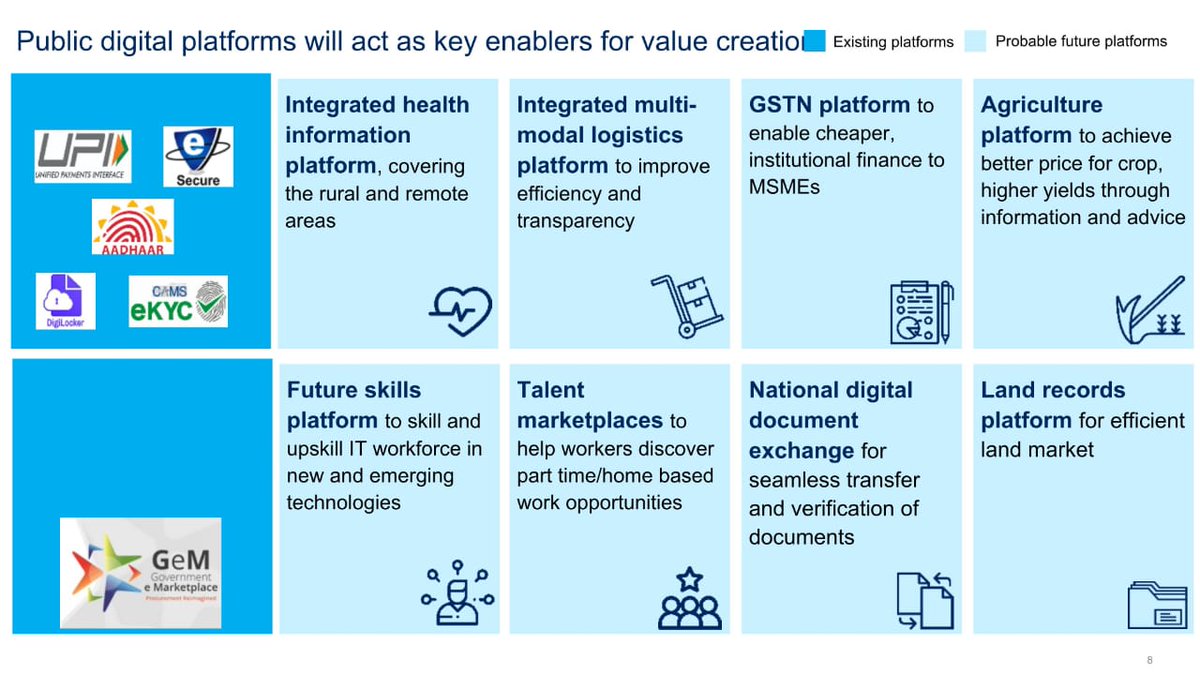
Capturing the potential value of a $1 trillion digital economy will require concerted action and extensive collaboration between government and business entities. For India to achieve its full digital potential and become the digital factory of the world, cross-cutting enablers are needed, like improving ease of operations for digital businesses and unlocking the flow of capital to them, facilitating a booming open-API ecosystem, supporting digital innovators through government procurement, and strengthening centres of higher education and innovation in new and emerging technologies like AI. The report further explores steps that will enable the move from the “business-as-usual” digital trajectory that would create economic value of $500 billion to $650 billion by 2025 towards the full potential scenario where the digital economy can create economic value of $1 trillion by 2025.
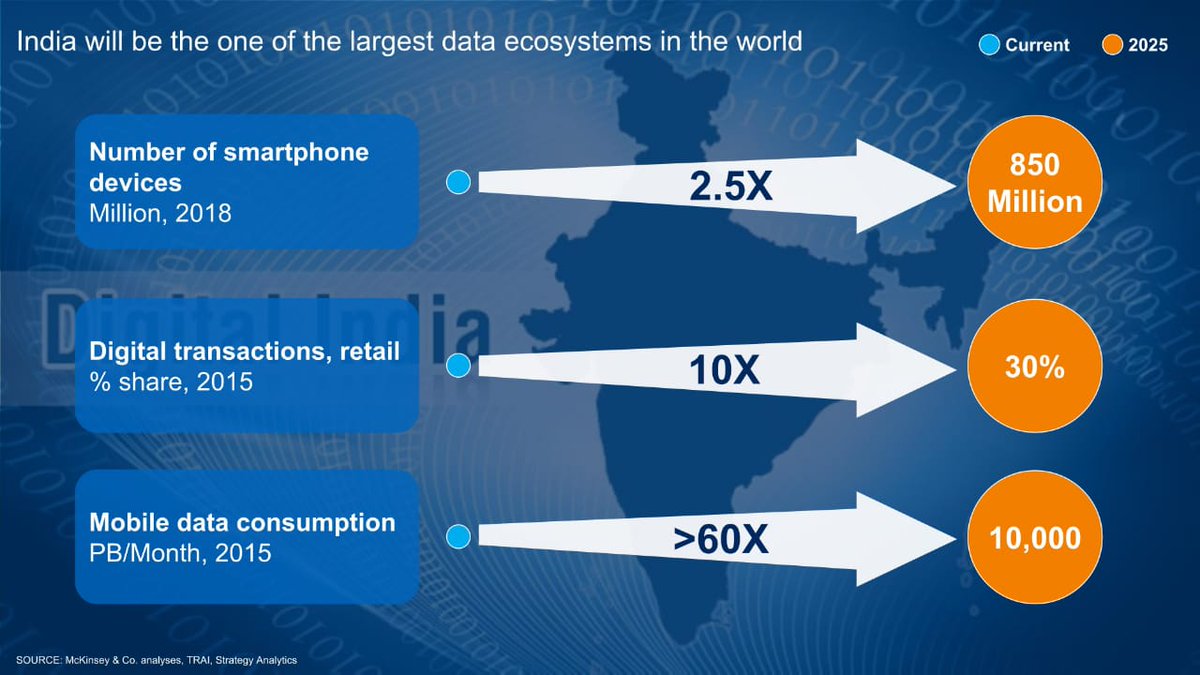
Secretary, Ministry of Electronics & IT, Shri Ajay Sawhney; President, NASSCOM, Ms. Debjani Ghosh and an array of representatives from technology and other industry segments were present on the occasion.
***
DJM/MAS/ST/SP
(रिलीज़ आईडी: 1565669)
आगंतुक पटल : 16560